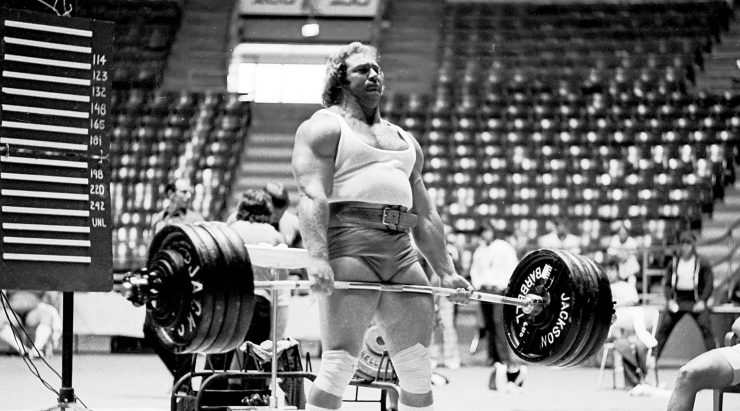When performed correctly, the deadlift is the best all-around lift for building mass and increasing strength. Sure, squats are great and the bench press is no slouch either, but the deadlift is superior to both of those lifts because of the number of muscles it engages; it works everything from your calves to your shoulders. To put it bluntly, if you can do only one lift, make it the deadlift.
Why deadlift?
- It’s functional. You pick stuff up and put stuff down every day. Sometimes that stuff is heavy. Not only will deadlifting help you in those endeavors, but it will also help make sure you are doing those tasks in the safest way possible.
- It builds overall strength and mass. The deadlift works the following muscles: back, glutes, legs, forearms, calves, shoulders and traps. Another important, and often overlooked, element of the deadlift is the effect it has on grip strength. With all those muscles engaged, the deadlift adds mass like no other lift. If you want a powerful overall build, you should deadlift.
- It works your cardiovascular system. While the deadlift isn’t a substitute for hill sprints or time on an Airdyne, it does help your cardio. Don’t think it’s true? Do a set of heavy deadlifts and see if you aren’t gasping for air by the time you reach failure.
- It’s good for core and stability. If you are using proper technique, the deadlift will help your posture and increase your core strength.
- It’s a great gauge of overall strength.
- Jon Pall Sigmarsson
How?
Okay, now you know why you should deadlift, but before you just walk up to a loaded bar and start pumping out reps, it’s important to know how to perform the lift correctly.
- The first thing you want to do when you approach the loaded bar is set your stance. Your feet should be shoulder width apart and the bar should be across the middle of your feet.
- Now that your stance is set and the bar is in the proper position, do not move the bar. Do not roll the bar forward or backward, keep the bar right where it is, across the middle of your feet.
- Lean over and grab the bar with an overhand (both palms facing you) grip, but keep your legs straight while doing this. You can use a split grip if you want (one overhand/one underhand), but ideally, both hands should be in the same position. Your forearms should be outside your legs, just short of touching.
- Now you’ll set your back in the proper position, which is the most important part of the lift. You’ll do this by bending your knees until your shins meet the bar. At this point, raise your chest. Doing this will put your spine in a neutral position; that is not rounded or hyperextended.
- If the bar moves during this process or your back does not feel like it is in the correct position, start over from the first step until you feel comfortable with your stance.
- Breath in and lift, driving your heels down at the same time. The bar should remain in contact with your legs, your core and back should stay tight, your arms should be straight, and your should squeeze your glutes once the bar hits thigh level. Do not lean back once you reach the top of the lift. Do not look up during the lift.
- Reset by reversing the above step. Do not round your back while lowering the bar and do not loosen your grip until the bar is resting on the ground.
- Do not drop the bar or bounce the weights between reps.

Dangers and Mistakes
- If you round or flex your back, you will set yourself up for injury. If you’re unsure you have achieved a proper lifting technique, make a video of your stance. Remember, keep a neutral spine during the entire lift.
- The reason you don’t bounce the bar is that you don’t want to use the momentum of the bar to power your reps.
- If you look up during the lift, you can also strain your back. Keep your head in line with your back.
- Do not use your arms during the lift other than to hold the bar. If you have bent elbows at any time of the lift, you risk injury.
- Don’t start heavy. Make sure you are comfortable with your stance and technique before you begin moving heavy weights.



